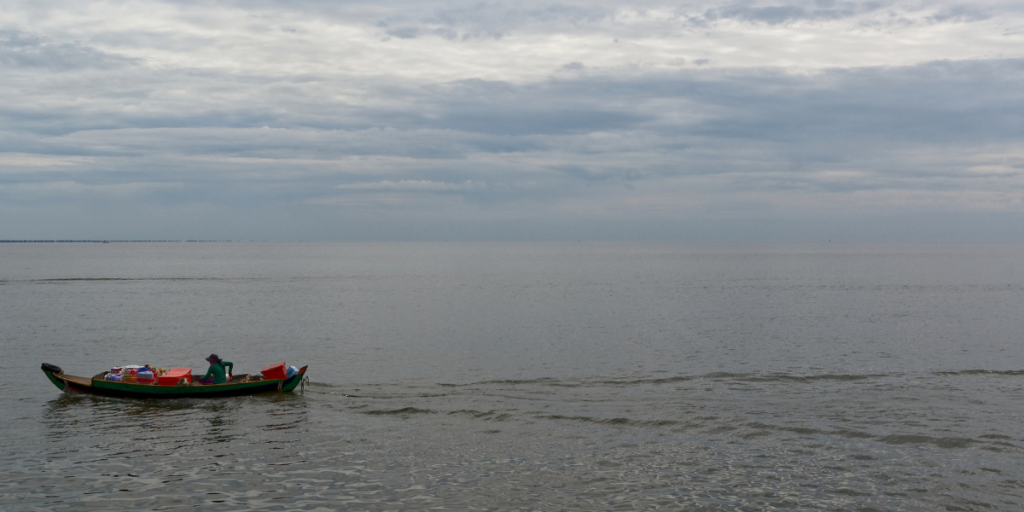The world’s accelerating demand for construction sand is emerging as a surprisingly destructive force — one that may now threaten the future of Cambodia’s Tonlé Sap, Southeast Asia’s largest freshwater lake.
Others are reading now
Sand — vital for concrete, glass, and land reclamation — is the planet’s second-most exploited resource after water. Many countries have banned in-river extraction due to severe environmental damage. But Science reports that Cambodia and parts of Vietnam continue dredging the Mekong to satisfy rapidly growing domestic demand, despite a formal export ban.
Fish biologist Zeb Hogan of the University of Nevada, Reno told Science that the environmental and social costs of sand mining “likely exceed the benefits by an order of magnitude,” and that countries with better data have already moved to limit or prohibit such extraction.
Tonlé Sap, however, sits directly downstream from some of the most intensively mined sections of the river — and new research suggests the consequences could be profound.
What the new modeling shows
According to Science’s reporting on the study, a research team led by hydrologist Quan Le of Loughborough University combined dredging records, riverbed-depth measurements, and water-level data into a basin-wide simulation of the lower Mekong.
Science reports that the model found a striking pattern: the more sand removed from the riverbed near Phnom Penh, the deeper the channel becomes — and the lower the Mekong’s ability to rise during monsoon season.
Also read
The projections published in Nature Sustainability are severe.
According to Science’s summary of the modeling results:
- By 2038, the lake’s flood-pulse volume may drop by 69%.
- The lake’s wet-season surface area could shrink by 40%.
- Dry-season outflow to the Mekong delta may decline by 59%, reducing the delta’s protection against saltwater intrusion.
The authors conclude that the only meaningful mitigation is to “halt and reverse the riverbed lowering,” Science reports.
Why the flood pulse matters
Tonlé Sap’s ecological and economic importance is enormous. But its distinctive hydrology is not widely understood outside the region.
The lake connects to the Mekong through the 120-kilometer Tonlé Sap River. During monsoon season, the Mekong rises so dramatically that it reverses the river’s flow, forcing water into the lake rather than out. This expansion historically increased the lake’s volume from 1–2 cubic kilometers in the dry season to around 80 cubic kilometers at peak flood.
Alice Hughes, a conservation biologist at the University of Melbourne, told Science the Mekong–Tonlé Sap system is likely “the most diverse [freshwater] system globally for migratory fish,” supporting roughly 1,400 species.
Also read
But if the Mekong can no longer rise high enough to produce the annual reversal, the lake’s expansion — and the nutrient cycle that underwrites its fisheries — collapses.
Earlier clues — and the missing piece
The weakening of this flood pulse was first noticed about 25 years ago. Initial theories blamed dams or climate change, but Science notes that earlier research by Wen Xin Ng and Edward Park, published in Science of the Total Environment, showed that neither factor alone could account for the magnitude of the decline.
Instead, Ng and Park pointed to sand mining near Phnom Penh, arguing that dredging had deepened the channel enough to suppress the Mekong’s seasonal rise. According to Science, the new modeling by Le’s team builds directly on that hypothesis and provides the strongest evidence to date that mining is the decisive factor.
Calls for urgent attention
Brian Eyler, a water-policy specialist at the Stimson Center, told Science that sand mining has been recognized as a problem but “not well understood.” He said he hopes the new study will finally elevate the issue to the level of international concern it deserves.
The researchers’ conclusion — that Tonlé Sap faces an “existential threat” — carries serious consequences for Cambodia’s fisheries, endangered waterbirds, and millions of people who rely on the lake for food and livelihood.
Also read
Yet Science reports that domestic dredging continues, even as the region’s ecological tipping point comes sharply into focus.
This article is made and published by August M, who may have used AI in the preparation


